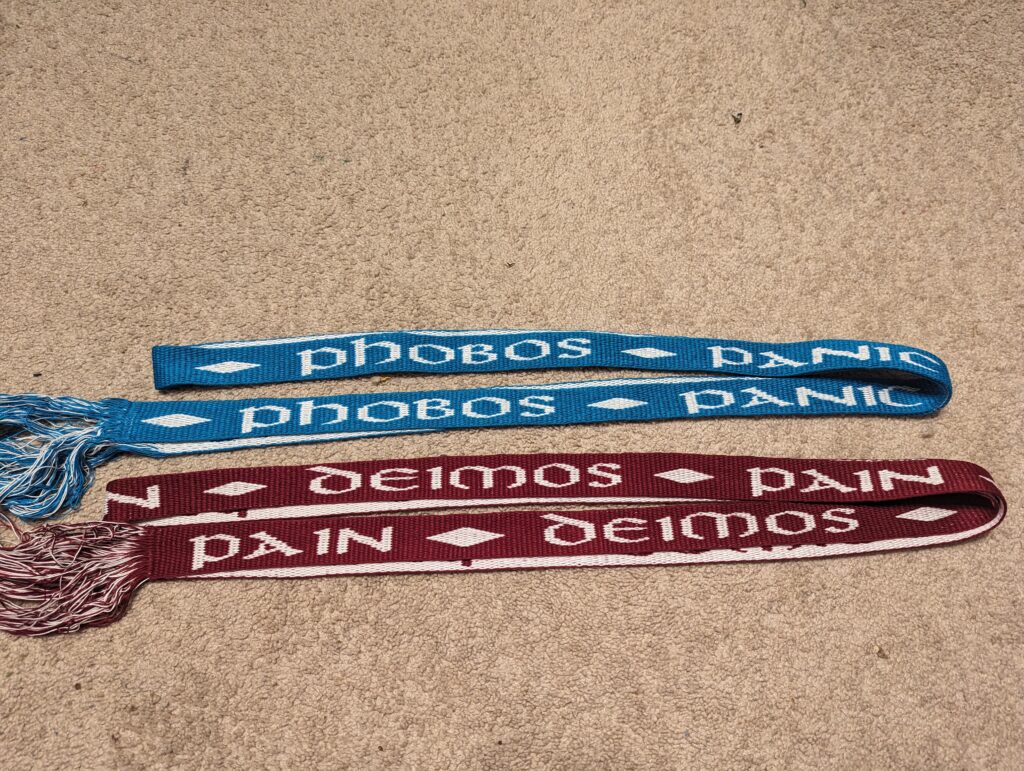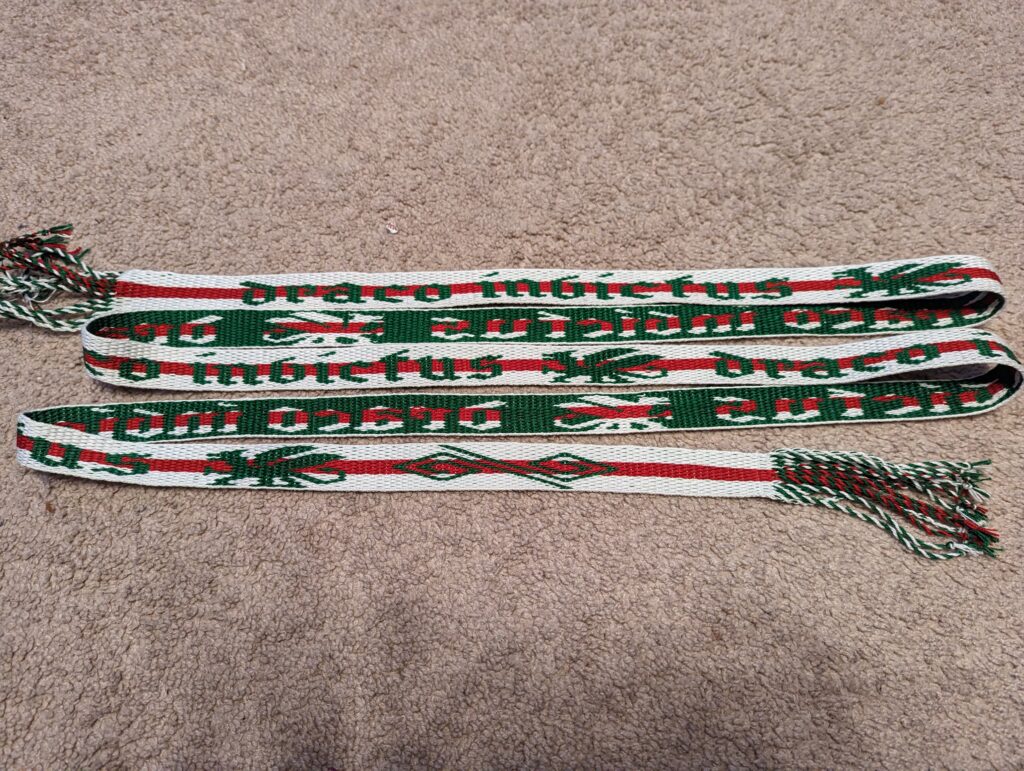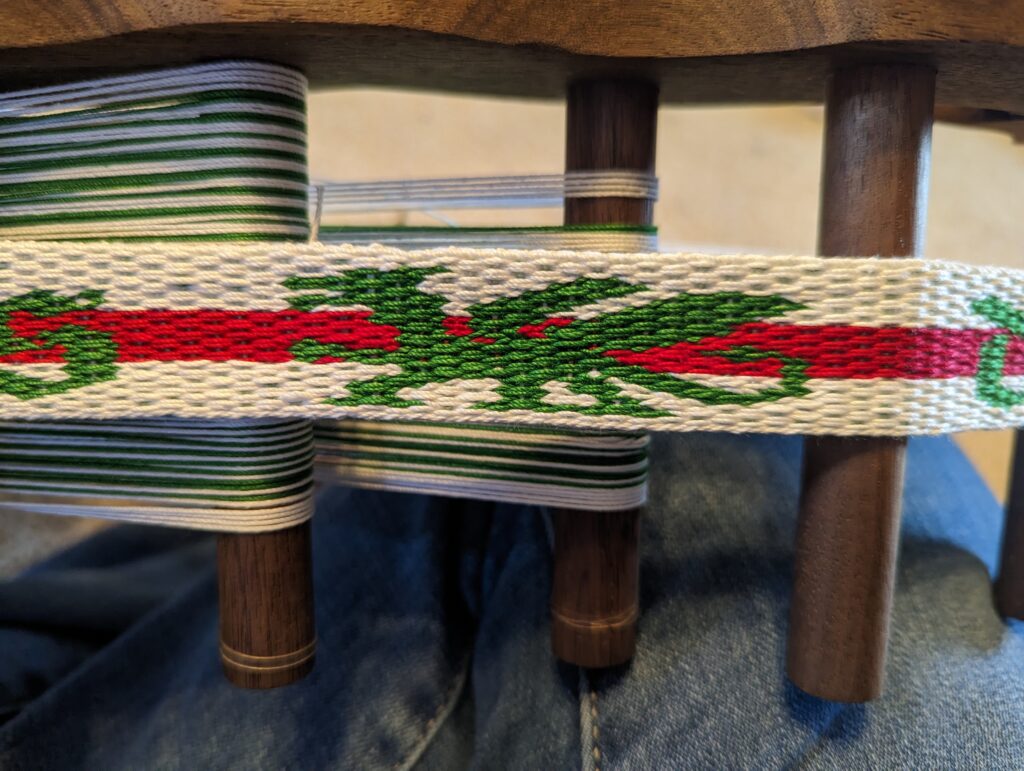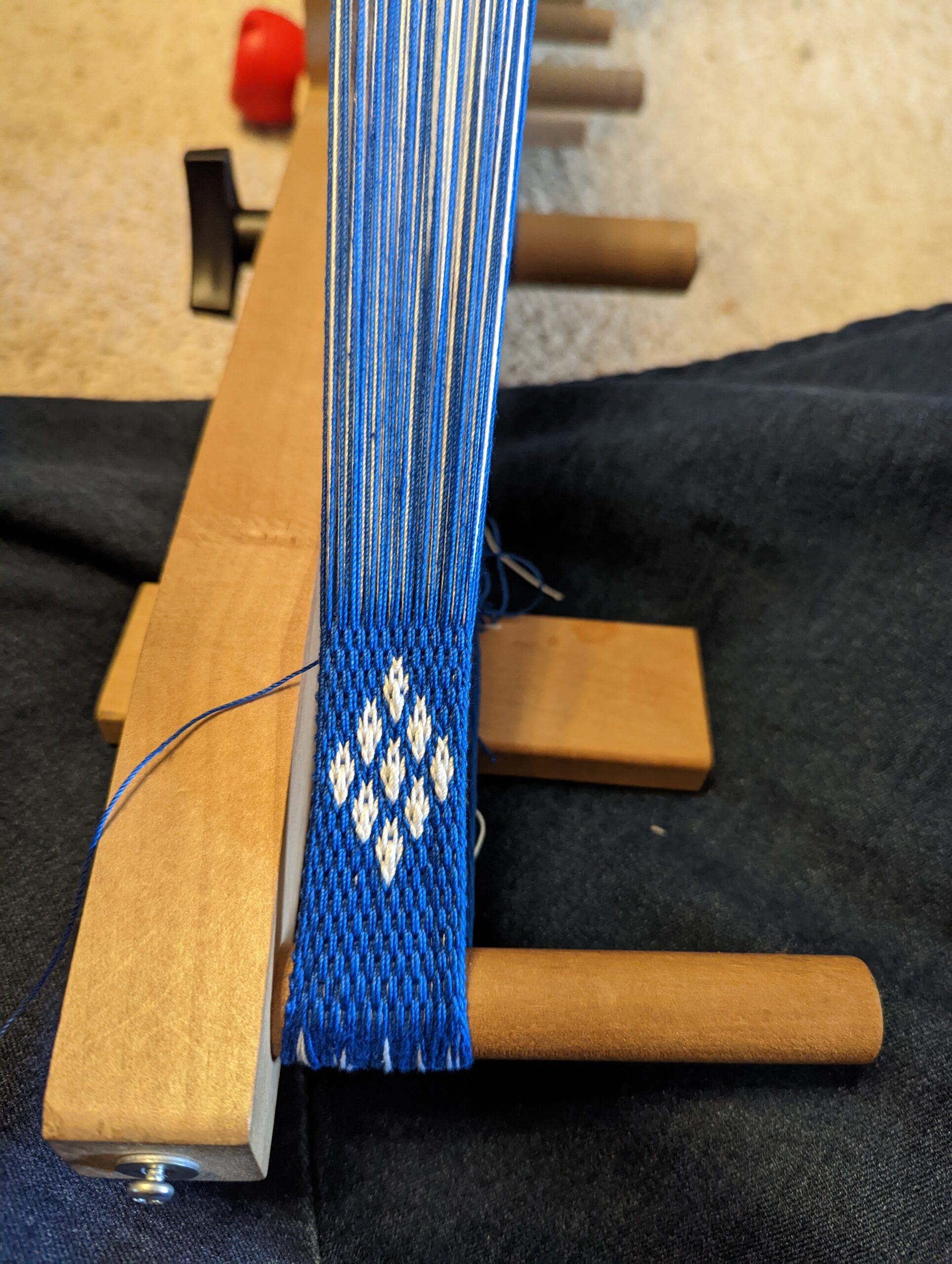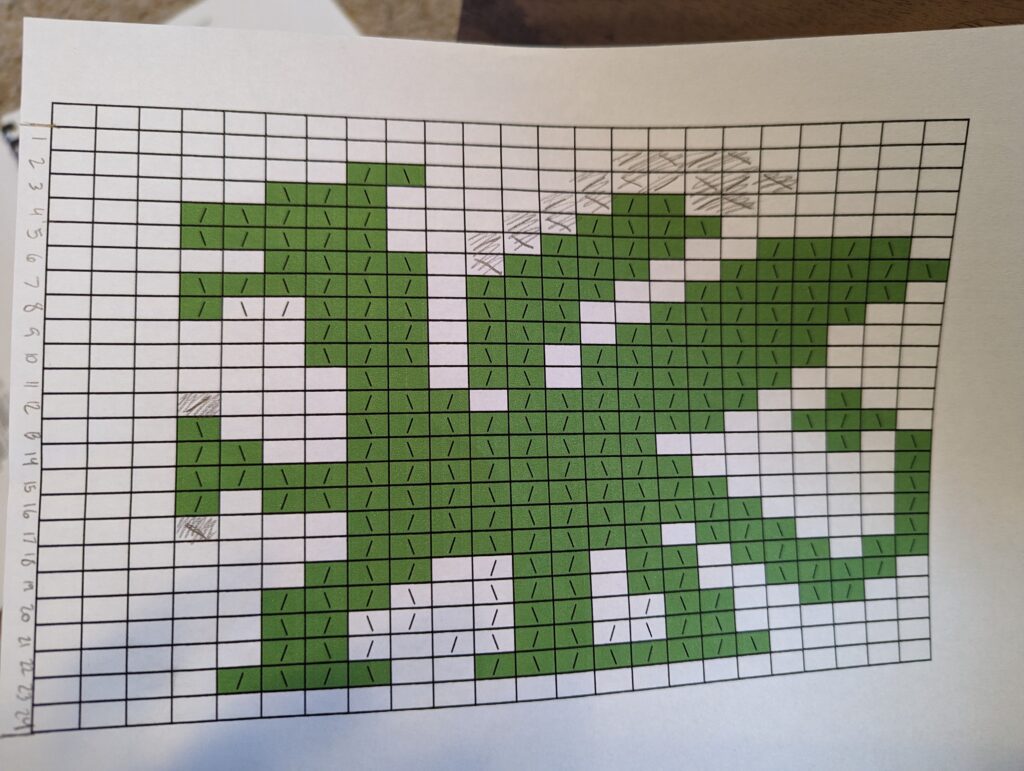Double-faced weave is a method of weaving that produces 2-toned images with a color-switched version on the reverse. This method is often used for belt favors, heraldic images, and text.
Threading
For double-face weave, you use (2) colors per card. Each card will have (2) threads of each color in adjacent spots. To illustrate:

Above I show alternating “S” and “Z” cards. You can also thread all of the cards in a single direction or do half “S” and half “Z”. These threading directions will create a weave with different structures and will also affect how your images look.
Weaving
The base pattern of double-face weave is (2) picks forward, then (2) picks backward. If you continue this pattern, you will end up with a solid color band with the reverse side being the 2nd color.
In order to create shapes in the secondary color, you turn some cards opposite of the base pattern. The best way to accomplish this is to separate the cards into 2 “decks” along the warp. They are offset by enough space so that you can turn the decks separately but should overlap so that the threads don’t catch on other cards.
*Important: You will always complete (2) picks before moving cards between decks.
Tips and Tricks
- Get a magnet board. Joann Fabrics has them in their embroidery section, marketed towards counted cross stitchers. Savers and Goodwill also have them in their baking section marketed towards cookie makers. Either way, it can help you keep track of more complex patterns.
- Start with smooth threads. Mercerized cotton (ex: Aunt Lydia’s crochet cotton) has a smooth surface. The threads don’t stick to each other like wool, silk, or non-mercerized cotton. An added benefit is that crochet cotton is readily available and reasonably priced, which is helpful when learning a new skill.
For more information:
https://www.jlmaclaren.com/string-theory.php J. L. Maclaren has quite a few double face motifs on his website. There are vines, leaves, flowers, and animals. The great thing about his page is that he shows both the weaving grid and images of it woven up.
The Techniques of Tablet Weaving, Peter Collingwood. This is a technical book and is amazing if you want to dive deep into tablet weaving. If you have a copy, the double-face weave section starts on page 169.
Please Weave a Message, Linda Hendrickson. This book has several fonts for weaving text into double-face weave. It also goes through the method to adapt a font into tablet weave.
Double Faced Tablet Weaving 50 Designs from Around the World, Linda Hendrickson. This book is full of designs. Most of them are 50+ tablets, so it isn’t for small looms, but it is wonderful for inspiration.
